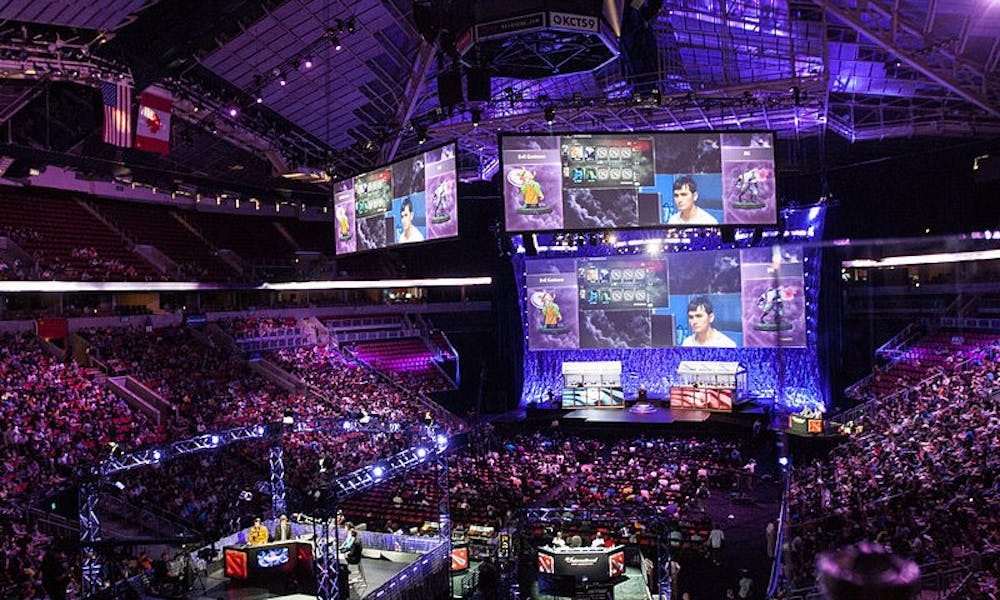If you’re bored during quarantine and looking for a fun, popular and lucrative way to pass the time, consider putting down that baking pan or pausing that Netflix show and picking up a controller to join the world of esports, a hot trend in the media and entertainment industry. Esports is a competitive video game sport that has grown to incorporate organized tournaments with professional players. Before the COVID-19 pandemic, these tournaments were almost always in-person events, complete with live audiences and referees who monitored potential cheating.
If this is your first time hearing about esports, you’re behind the curve — esports is one of the fastest growing industries in the world. Last year, the esports industry had an estimated audience of 453 million, up from 293 million in 2016. By 2021, that number is expected to reach 557 million. And it’s not just your stereotypical G Fuel-drinking, Doritos-loving high school guys pushing this growth: Universities across the nation have begun investing in this industry. According to the National Association of Collegiate Esports, more than 170 U.S. colleges have varsity esports programs and are offering around $16 million per year in scholarships. College esports tournaments have attracted over 1,350 schools and 40,000 players.
Even the most traditional Wall Street bankers are taking notice of this industry’s potential to make big money. Most esport viewers are in their teens or early twenties, a much-coveted demographic for advertisers, and 43% of esports fans have an annual household income of $75,000. For brands who want to acquire new, young, high-spending customers, esports is especially attractive. Louis Vuitton, for example, is collaborating with video game developer Riot Games to design virtual items in League of Legends (such as “prestige skins”) that players can buy using real money. The fashion brand also spent 900 hours creating an extravagant custom trophy case that combines Louis Vuitton’s bougie flair with League of Legends’ medieval style. Meanwhile, some companies have profited from esports without even trying. In 2018, professional gamer Ninja crashed the website of MeUndies just by mentioning the underwear brand on a livestream.
Why has esports experienced this meteoric rise in popularity and significance? From a social standpoint, esports is far more inclusive than other sports. Men and women of nearly all ages and from various social groups and demographics can play on the same teams and easy translation in the virtual format tears down the language barrier. Unlike in real sports, where genetics may greatly affect your potential to succeed, in esports, anyone with enough practice can become a competent gamer — and everyone has the potential to compete with the best.
From a technological standpoint, video games with increasingly life-like visuals have enhanced the viewing experience. Games now frequently run on a smooth 60 frames per second with 4K resolution, resulting in extremely realistic animations and an immersive experience. The rise of esports can also be traced to the rise of video games among youth. According to Pew Research, 90% of teens aged 13-17 played video games in 2018. The percentage is 97% among boys of that age. With a high number of youth playing games, it’s not hard to imagine that a few would get interested in esports and start the trend among their peers.
The viewership of esports will only grow, especially as famous names in other industries, such as Jennifer Lopez and Travis Scott, associate themselves with leading esports tournaments. The growth of advertising in esports means that brands will now interface directly with previously hard-to-reach audiences, generating previously unthinkable ways to advertise and making space for unlimited creative potential. So, if you want to curb your bread-making addiction during quarantine and spend this extra time getting ahead of the game (pun absolutely intended), consider esports.
Get The Chronicle straight to your inbox
Sign up for our weekly newsletter. Cancel at any time.

